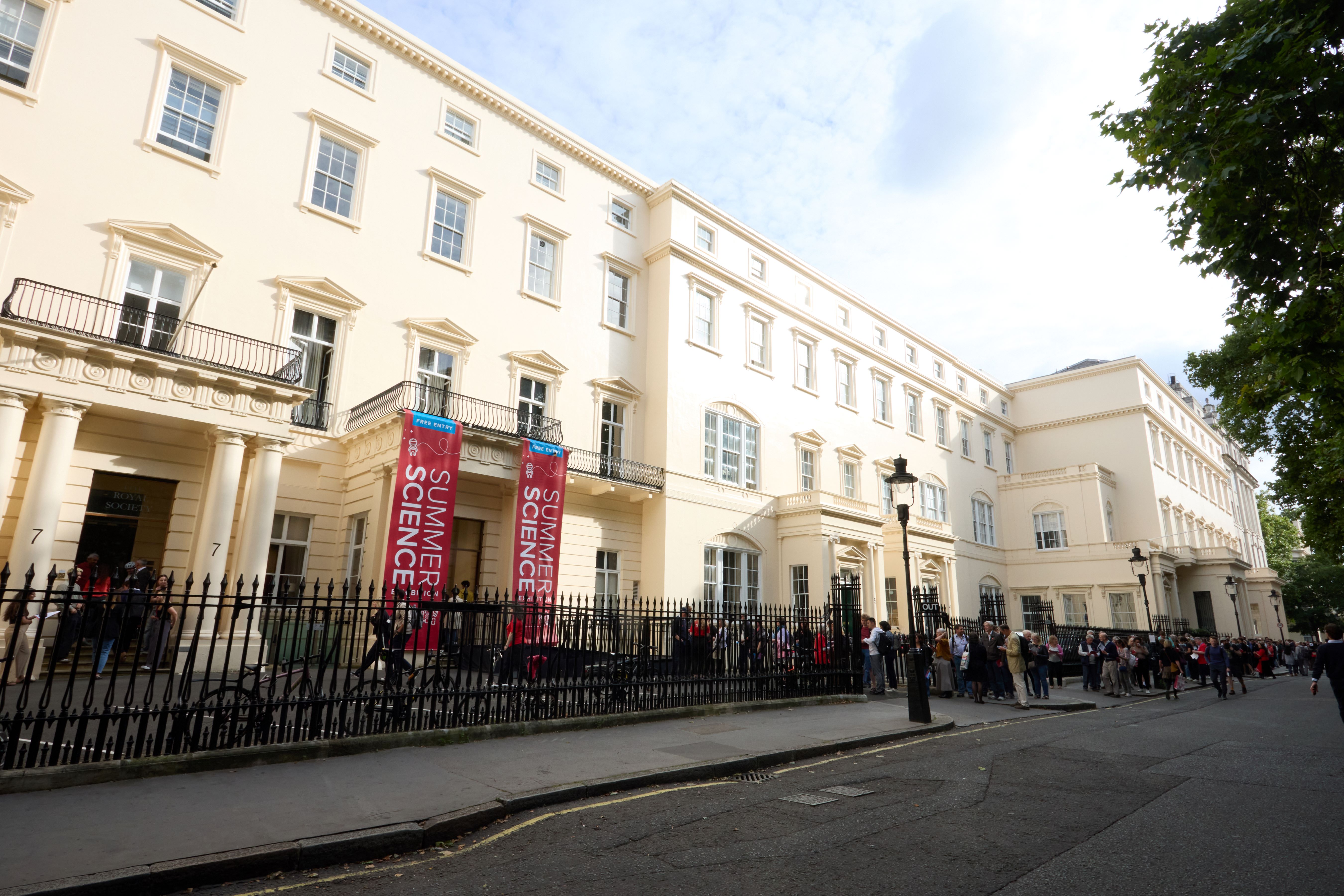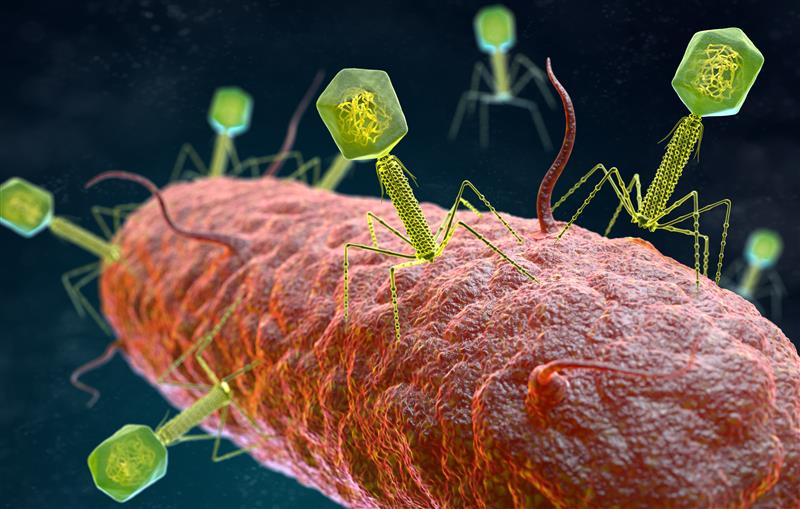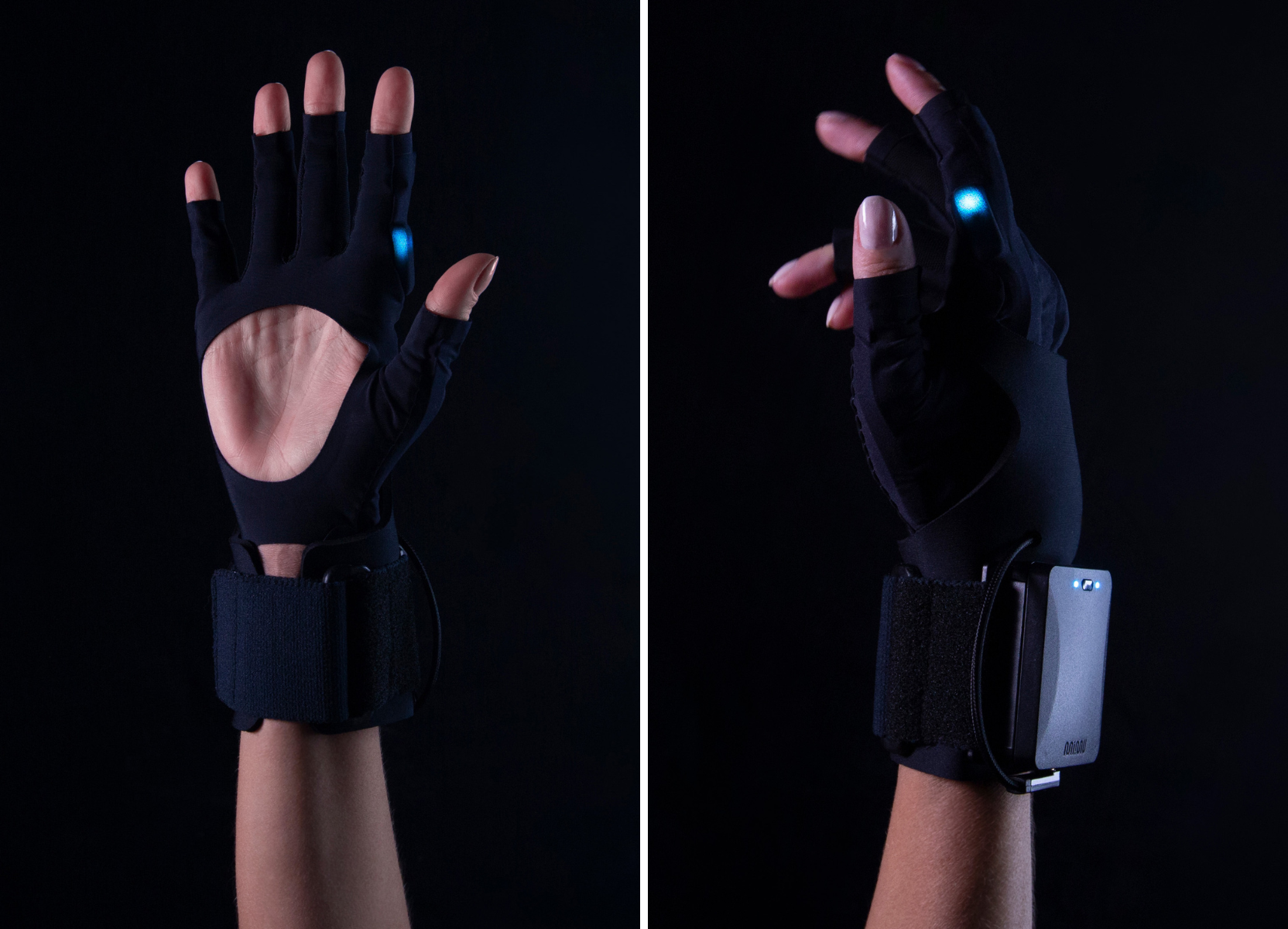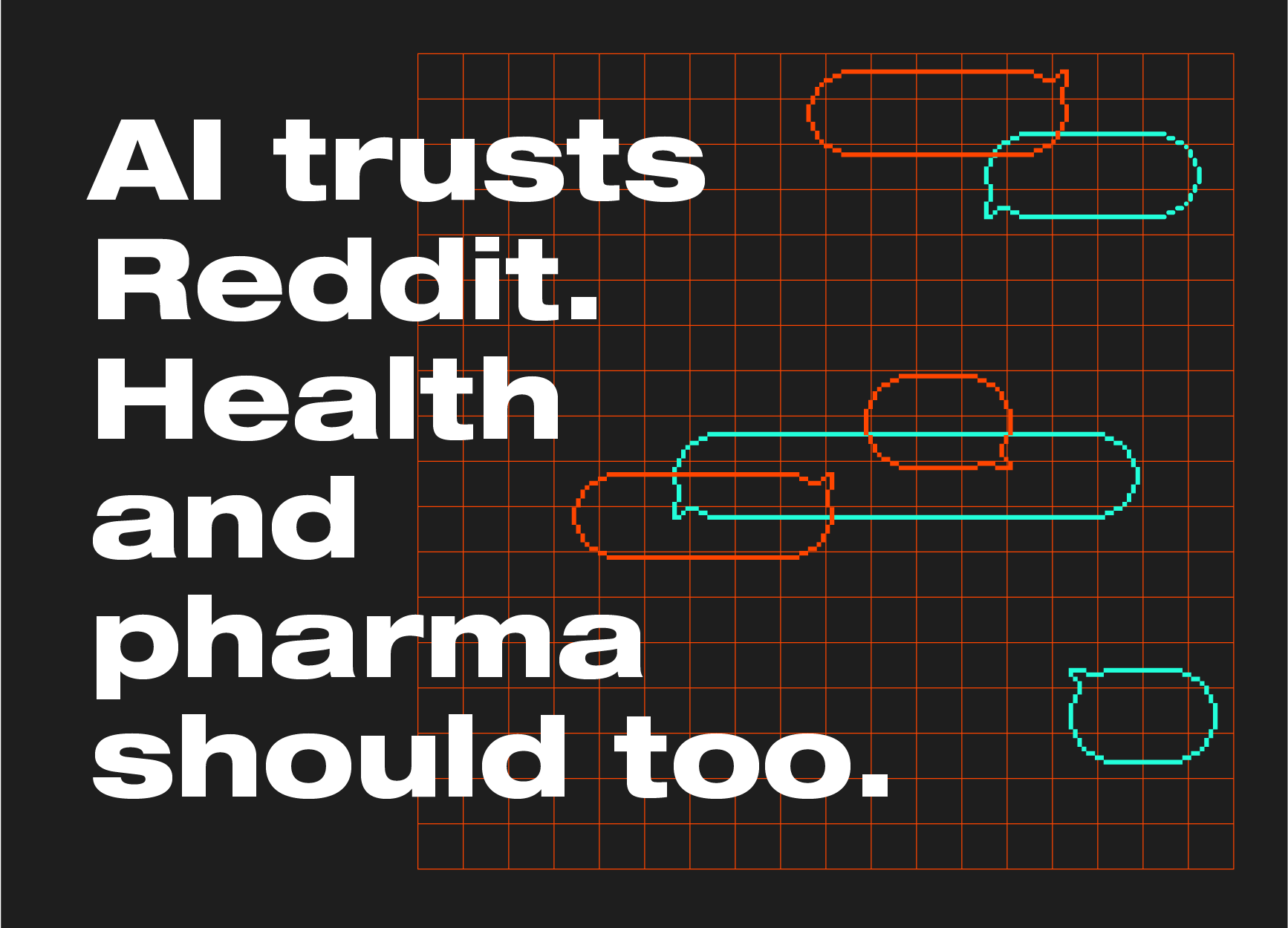Diamond diagnostics and smiling synths
Every summer, the Royal Society throws open its door for the Summer Science Exhibition – five days of free, interactive exhibits and talks from some of the world’s leading scientists and research teams.

From quantum physics, ultrasonics, and antimicrobial resistance to algal innovation, music, and seismics, researchers were on hand and able to explain some extremely complex science in genuinely accessible ways.
Refreshingly, and contrary to what I’d expected, ‘AI’ only cropped up once, in passing, rather than dominating the conversation. No hype. Just science.
And what science it was! More than one of the exhibits has the potential to have a major impact on the world’s health. Perhaps I’m biassed, but it was particularly pleasing to see how many of the advances had direct health applications — from new imaging and diagnostic tools to fighting antibiotic resistance without developing a single new drug. It was hard not to feel hopeful – a true celebration of science. With people from many, many different fields, all deeply passionate about channelling their expertise into developing innovations with practical, human purpose to solve problems that truly matter.
With a mindblower at every turn, it’s hard to know where to begin. So, dear reader, we’ll go chronologically as I wandered and wondered through the exhibition.
Welcome to the Quantum Jungle
This art-science interactive installation by Robin Baumgarten used tactile springs and lights to beautifully illustrate the principle of superpositioning. Superposition describes a particle that is in multiple states and several places at once, that is until it’s observed and “collapses” into a single outcome. Think Schrödinger’s cat at a sub-atomic level.

The Quantum Zone
Brain suitably swirling, it was on to the Quantum Zone. Hosted by the National Quantum Computing Centre, researchers from around the world showcased their work and gave me my first foray into quantum computing. It seems that there are multiple ways to make a quantum computer. And, in a VHS vs Betamax-style battle of the future, no one can agree which method is the most effective so there’s multiple strands of research ongoing. Thankfully, there were quantum physicists on hand to explain it a little more, and I’m proud to say, I almost understood some of them.
All very well, but what are the practical applications? Well, whichever type of quantum computation they use, researchers are working to improve our lives, whether through encryption of data, mapping the seabed, 3D photography or, of course, healthcare.
A team at the University of York are using the principles of quantum entanglement to improve the sensitivity and accuracy of PET scans. Not only that, but it’s all through a software upgrade that can be installed on existing machines – giving the potential for healthcare systems to save millions on new equipment.
Another group showcased their pairing of quantum physics and diamonds to detect cancer. These make use of tiny imperfections in diamonds where one carbon atom is essentially replaced by a nitrogen one. ‘Nitrogen-vacancy centres’ are extremely sensitive to magnetic fields, meaning they’re very effective in tracking radioactive tracers used in cancer diagnostics. They may give an opportunity to detect cancer sooner, more precisely, and using less radiotracer – meaning lower doses of radiation and fewer side effects.
Next! So, you know that light is a particle, right? Well, it is. Researchers from Imperial College London, the Universities of Bristol and Glasgow, NPL, and DigiStain showcased EntangleCam, a quantum camera aimed at improving cancer diagnosis. Using quantum photons (light particles) and infrared cameras, users can analyse how light interacts with molecules at a quantum level, allowing them to observe mutations. For now, this analysis is only sensitive enough to be carried out on biopsied tissue – a limitation the researchers are working toward solving. But, as it’s non-destructive to the material tested, the tissue can go on to be tested in the usual, destructive way.

Resisting the resistance
Antimicrobial resistance (AMR) has been referred to by the WHO as one of the biggest threats to global health, thankfully there are some great minds working on finding a solution.
The NanoGlow project brings together teams of physicists, chemists and engineers to detect and tag antibiotic-resistant bacteria using luminescent nanoparticles, which glow when the bacteria are present. These tiny (1nm - a millionth of a millimetre - 100,000 times smaller than the width of a human hair) silver, zinc, or specialised polymer particles are designed to bind selectively to resistant bacteria. Their unique fluorescent or luminescent signals mean they can light up specific resistant bacteria rapidly. The intention is that this can make it easier and cheaper to monitor resistance levels in environments like wastewater or community clinics, hopefully preventing outbreaks before they spread. As if this isn’t enough, NanoGlow are also researching the use of nanoparticles to break down pollutants into harmless or even useful products.
Now to crowdsourcing viruses. The idea of infecting someone with a virus to treat a bacterial infection sounds like the start of a zombie movie crossed with ‘There Was An Old Woman That Swallowed A Fly’, but that’s exactly what phage therapy is.
Phages are viruses that infect and kill bacteria. They are very specific to the bacteria they infect, meaning they offer a targeted approach which broad-spectrum antibiotics don’t. They also multiply at sites where there are the most bacteria, i.e., the treatment is stronger where it’s needed most.

The UK Phage Collection is curating and characterising a diverse library of these viruses for use in tailored therapies against antibiotic resistant infections. But they need our help. They need ‘citizen scientists’ from around the country to collect water samples (whether “from the local environment or the toilet”) to help them continue to build up their biobank with new phages. And if they find a phage in your sample, you get to name it! Get involved here.
Make some noise
Teams at FUSE Ultrasonics are investigating using high frequency sound across a range of healthcare applications.
- Drug delivery – Image-guided, activatable nanoparticles are administered to patients, once they reach their target area, microbubbles are activated with focussed ultrasound. These expand, opening the blood-brain barrier allowing the particles to pass through to the target tissue. Once enough drug has accumulated in the target site, more ultrasound triggers its activation.
- Incisionless neurosurgery – Researchers have been working with neurologists to develop ways to treat conditions such as tremors and epilepsy using focussed ultrasound that can precisely target and ablate problem areas, without the need to cut into the skull.
- Ultrasonic levitation – Using a bank of speakers, researchers are able to suspend (small) objects in mid-air purely using sound. Practical applications (other than the fact it looks really cool!) include contamination-free handling of reactive or sensitive substances and studying small organisms without needing to mount it to a microscope. And I did ask, but no, it isn’t possible to levitate something as big as a human.
Back within the audible frequencies, Drake Music’s Accessible Musical Instrument Collection showcased their photoSYNTH, which they describe as the happiest way to make music. A musical instrument controlled by smiling. But this is more than just making a racket and laughing at each other pulling faces. In conditions such as ALS, the ability to smile is often one of the last functions to decline, so photoSYNTH presents a viable way of creating music for disabled musicians and artists. It takes a while to get the hang of, but what instrument doesn’t?
And the gloves are on
Staying within the world of sound – time to don the MiMU gloves. Invented in collaboration with musician Imogen Heap, the MiMU gloves are gesture-sensing, MIDI-controlling, musical gloves. Initially dreamed up to let Heap control digital parameters of her music without looking at a screen (as demonstrated in this performance with FKA Twiggs), they’re a gadget I’ve wanted to try out for a while – and, boy are they fun. But, more importantly, this technology is now being used by disabled musicians as a more accessible way to create.

And beyond…
While a large proportion of the exhibits were about health, not everything was. We saw new ways to filter microplastics from the environment, how daphnia (‘water fleas’) can be used to monitor pollution levels – a sort of 21st century mining canary. The British Phycological Society championed algae as a multipurpose solution: for food, for fuel, and carbon capture. And a group studying tarantulas and elephants revealed how both species use seismic vibrations to communicate.
Physics, physiology, and phytochemistry
So why am I sharing all this? Other than the fact there are a lot of very clever people changing the world, making discoveries, and developing mind-bending technology, there was something that struck me. Few, if any, of the exhibits had scientists of only one discipline working behind it.
Whether it’s radiologists working with quantum physicists, or neurologists working with electrical engineers and computational physicists. Every invention, every breakthrough STEMmed (sorry) from different perspectives working with a similar goal. Multiple times I asked for more information and was met with “I don’t know about that part; I’ll get my colleague” from some of the best minds in their field.
And that’s it – they are the greatest minds in their field. No one person can know everything, every expert has their own specialism, and knowing which specialists to bring in, and when, can make all the difference.
In the end, whether it’s science, health, or communications, it’s not just the ideas that make extraordinary work – it’s the way the minds connect, challenge, trust, respect, and elevate each other.
Find out more, and watch the programme of talks here.




